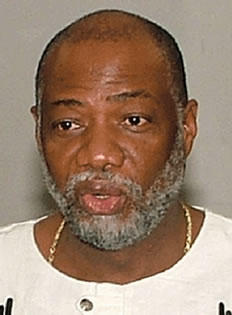Black Settlers and Native Africans
Although no caste system existed as such within the ranks of the Americo-Liberians, a small number of mulattoes, mainly from Virginia and Maryland, formed an elite group set apart by their "means and education" from black Americo?Liberians. They were prominent in commerce and for more than 50 years dominated the political leadership of the country. Some of the mulatto merchants maintained close business contacts in the United States. Roberts, for instance, had a partnership in a firm in his hometown of Petersburg, Virginia, to which he exported wood, palm oil, and ivory for sale in the United States.
A report on the activities of the colonization societies prepared for the United States Congress in 1843 provided detailed information?including names, places of origin, and occupations?about those who had settled in Liberia by that date. Since 1820, according to the report, a total of 4, 771 black Americans had been transported under the auspices of the societies. Of these, only 2,388 were still living in Liberia in 1843, yet less than 10 percent of the immigrants had chosen during that time to return to the United States. About 1,900 had succumbed to tropical diseases?by far the leading cause of death?although chances of survival were considered much improved once a settler had passed through the "seasoning" period, or first few years of exposure to the new and difficult environment. Nearly 100 settlers had been victims of drowning in the region's swift?flowing rivers. The rate of infant mortality was extremely high.
The settlers' early expectations of making fortunes in trade had been deflated by the time of the 1843 report. Out of 1,100 whose occupations were given, fully 700 were listed as semiskilled workers and nearly 200 as farmers. About 125 were employed as skilled craftsmen, and only 70 were identified as engaged in commerce or as practicing a profession. It was not uncommon, however, for farmers?particularly those upriver?to double as traders, for businessmen to serve as estate owners, or for employed persons to do subsistence farming on the side.. It was estimated thtat about 10 percent of the settlers were literate, but only 42 persons were identified as being"educated." Settlers came to Liberia from almost all the states then composing the union, but had provided a disproportionately large number of emigrantsmore than one?third of the total?followed at a distance by North Carolina and Maryland. '
The support of the United States government for the colonization effort had been contingent on the creation in Liberia of a refuge for Africans recaptured from the slave ships by the American naval patrols. Initially, the settlements in Liberia were seen as providing temporary shelter for recaptives until such time as they could be returned to their home regions. It was soon apparent, however, that such an undertaking would be impractical, if not impossible, because of the large number of locations from which they had been taken as slaves?even when these could be identified by naval authorities. Nor were recaptives particularly anxious to be repatriated.
As of 1843 only about 300 recaptives had been resettled in Liberia, a number small enough to be assimilated readily into the Ain erico?Liberian population. Almost all were baptized, took English names, adopted the dress and manners of the settlers, and were accorded recognition as members of the community. Known collectively as the "Congoes," the recaptives referred to themselves as "Americans" and considered themselves socially superior to tribal Africans.
The number of recaptives brought to Liberia increased dramatically in the 1840s and 1850s as a result of stepped?up vigilance by the naval patrols, and by 1860 more than 5, 000 had been introduced into the country, a number almost equal to that of settlers from the United States then living in Liberia. Once accepted as "civilized," the Congoes enjoyed the full rights of Liberian citizenship on an equal basis with the settlers. Particularly after the founding of the True Whig Party in 1860, the Congoes assumed importance as a political constituency that was much courted by politicians.
The Cangoes were also a key factor in the expansion of the frontier, where they worked in lumbering and on upriver farms. They mixed more easily with the indigenous population in settings that were probably not too different from those from which they themselves had come. Typically, they married women from a neighboring people?usually bY marriage payments?establishing kinship ties with the group from which the woman came but raising their children as Americo?Liberians.
By 1870 Liberia had attracted 13,000 immigrants from the United States. About 60 percent of them were emancipated slaves, many of whom had been freed or had purchased their freedom in order that they might emigrate to Liberia, and the remain der were freeborn blacks. Over and above this number were several hundred West Indian blacks, mostly from Barbados, who had arrived during the 1860s. In addition to the recaptives who had been received and integrated, as many as 3,000 Africans from local tribal groups had been "civilized" and "adopted" into the Americo?Liberian community.
Emigration decreased rapidly after the 1870s as the realities and hardships of life in Liberia became better known to potential settlers. Even at the height of enthusiasm for colonization, the response to appeals from the white?organized societies had been meager in relation to the size of the free black population in the United States. Sorne had actively opposed the recruitment of fellow blacks for colonization, which they equated with deportation from a country that, as one prominent critic of the movement remarked, "we have enriched. . .with our blood and tears."Typical, perhaps, of the motivation for many of those black Ainericans who did take the opportunity to emigrate was that expressed in a letter from an early settler to her former mistress in the United States: "It gives me great satisfaction that everything I do is for myself and for my children."
A report on the activities of the colonization societies prepared for the United States Congress in 1843 provided detailed information?including names, places of origin, and occupations?about those who had settled in Liberia by that date. Since 1820, according to the report, a total of 4, 771 black Americans had been transported under the auspices of the societies. Of these, only 2,388 were still living in Liberia in 1843, yet less than 10 percent of the immigrants had chosen during that time to return to the United States. About 1,900 had succumbed to tropical diseases?by far the leading cause of death?although chances of survival were considered much improved once a settler had passed through the "seasoning" period, or first few years of exposure to the new and difficult environment. Nearly 100 settlers had been victims of drowning in the region's swift?flowing rivers. The rate of infant mortality was extremely high.
The settlers' early expectations of making fortunes in trade had been deflated by the time of the 1843 report. Out of 1,100 whose occupations were given, fully 700 were listed as semiskilled workers and nearly 200 as farmers. About 125 were employed as skilled craftsmen, and only 70 were identified as engaged in commerce or as practicing a profession. It was not uncommon, however, for farmers?particularly those upriver?to double as traders, for businessmen to serve as estate owners, or for employed persons to do subsistence farming on the side.. It was estimated thtat about 10 percent of the settlers were literate, but only 42 persons were identified as being"educated." Settlers came to Liberia from almost all the states then composing the union, but had provided a disproportionately large number of emigrantsmore than one?third of the total?followed at a distance by North Carolina and Maryland. '
The support of the United States government for the colonization effort had been contingent on the creation in Liberia of a refuge for Africans recaptured from the slave ships by the American naval patrols. Initially, the settlements in Liberia were seen as providing temporary shelter for recaptives until such time as they could be returned to their home regions. It was soon apparent, however, that such an undertaking would be impractical, if not impossible, because of the large number of locations from which they had been taken as slaves?even when these could be identified by naval authorities. Nor were recaptives particularly anxious to be repatriated.
As of 1843 only about 300 recaptives had been resettled in Liberia, a number small enough to be assimilated readily into the Ain erico?Liberian population. Almost all were baptized, took English names, adopted the dress and manners of the settlers, and were accorded recognition as members of the community. Known collectively as the "Congoes," the recaptives referred to themselves as "Americans" and considered themselves socially superior to tribal Africans.
The number of recaptives brought to Liberia increased dramatically in the 1840s and 1850s as a result of stepped?up vigilance by the naval patrols, and by 1860 more than 5, 000 had been introduced into the country, a number almost equal to that of settlers from the United States then living in Liberia. Once accepted as "civilized," the Congoes enjoyed the full rights of Liberian citizenship on an equal basis with the settlers. Particularly after the founding of the True Whig Party in 1860, the Congoes assumed importance as a political constituency that was much courted by politicians.
The Cangoes were also a key factor in the expansion of the frontier, where they worked in lumbering and on upriver farms. They mixed more easily with the indigenous population in settings that were probably not too different from those from which they themselves had come. Typically, they married women from a neighboring people?usually bY marriage payments?establishing kinship ties with the group from which the woman came but raising their children as Americo?Liberians.
By 1870 Liberia had attracted 13,000 immigrants from the United States. About 60 percent of them were emancipated slaves, many of whom had been freed or had purchased their freedom in order that they might emigrate to Liberia, and the remain der were freeborn blacks. Over and above this number were several hundred West Indian blacks, mostly from Barbados, who had arrived during the 1860s. In addition to the recaptives who had been received and integrated, as many as 3,000 Africans from local tribal groups had been "civilized" and "adopted" into the Americo?Liberian community.
Emigration decreased rapidly after the 1870s as the realities and hardships of life in Liberia became better known to potential settlers. Even at the height of enthusiasm for colonization, the response to appeals from the white?organized societies had been meager in relation to the size of the free black population in the United States. Sorne had actively opposed the recruitment of fellow blacks for colonization, which they equated with deportation from a country that, as one prominent critic of the movement remarked, "we have enriched. . .with our blood and tears."Typical, perhaps, of the motivation for many of those black Ainericans who did take the opportunity to emigrate was that expressed in a letter from an early settler to her former mistress in the United States: "It gives me great satisfaction that everything I do is for myself and for my children."



